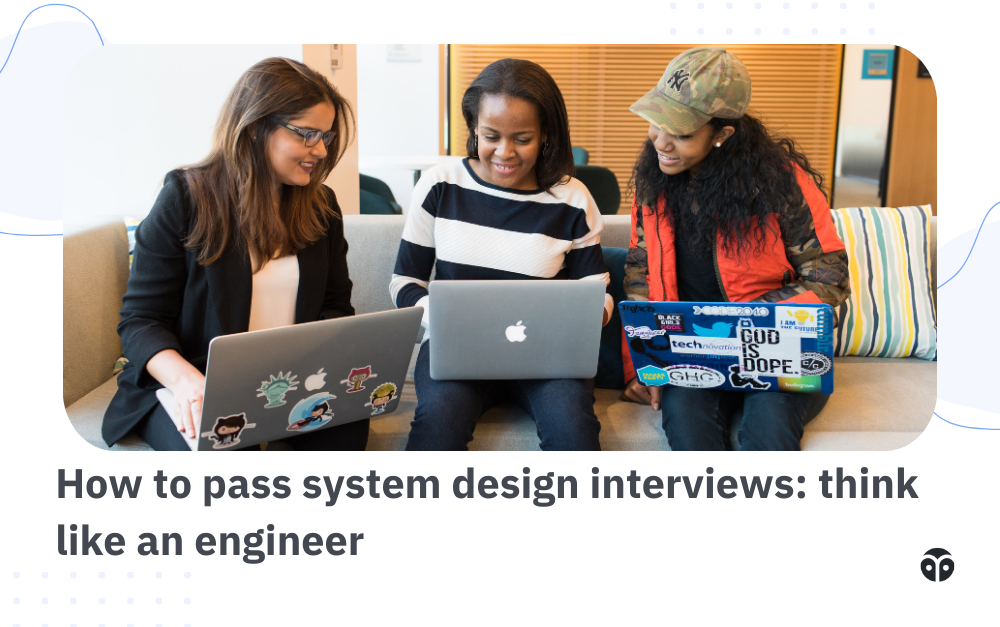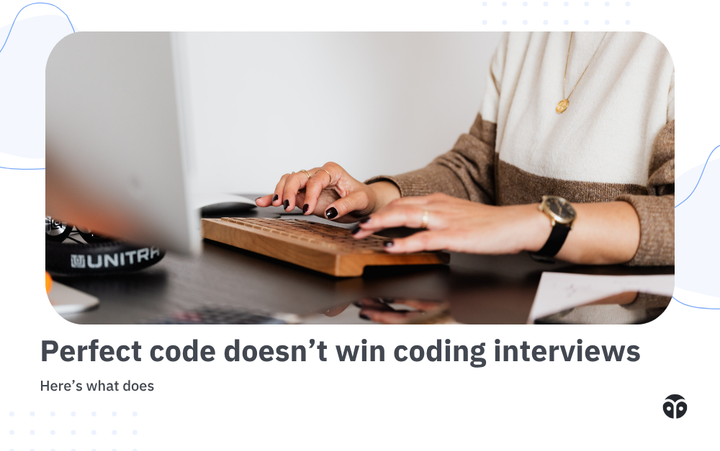How to pass system design interviews: think like an engineer
System design interviews are designed to test how you think like an engineer—interpreting requirements, prioritizing features, and proposing scalable solutions. Learn how to showcase this mindset and succeed.

System design interviews mirror the complexities of real-world engineering. They’re deliberately open-ended, forcing candidates to interpret requirements, prioritize features, and propose scalable solutions. To succeed, you have to think like an engineer.
Thinking like an engineer involves asking the right questions, focusing on user needs, and designing systems that solve real-world problems while accounting for constraints, trade-offs, and edge cases. Here's how to showcase that mindset in your next interview.
Focus on the user journey
One of the most frequent mistakes candidates make is sketching isolated components without considering how they interact. Candidates often feel pressured to list every possible feature, creating a tangled web of services without clear connections.
For example, when designing a ride-sharing service like Uber, it’s tempting to jump straight into features: riders, drivers, location tracking, matching, and request management. However, listing these without thinking through how they connect creates a tangled web of services.
What to do instead: Trace the data flow and focus on the user journey
Start by tracing the flow of data through the system and thinking from the perspective of the user. In the ride-sharing example:
- A rider requests a trip, providing a starting point and destination.
- Active drivers are located and notified.
- Drivers accept or decline the ride.
- Handle states like multiple drivers accepting simultaneously or no drivers being available.
By walking through the data flow, you can identify key system challenges. For instance, maintaining the state of a ride request is critical because it involves multiple interactions between users and systems. Highlighting issues like race conditions or edge cases early shows that you’re thinking about real-world engineering problems.
Key takeaway: A thoughtful, user-focused design process is more valuable than a diagram full of disconnected components.
Don’t stay in hypotheticals
Many candidates share theoretical knowledge without applying it to the specific problem at hand. They list the trade-offs of different design choices — like SQL vs. NoSQL databases — but their answers sound like they’re pulled from a textbook. For example, a candidate might explain the benefits of SQL’s ACID properties or NoSQL’s speed but fail to connect these to the actual system they’re designing.
What to do instead: Make decisive calls based on constraints
Demonstrate that you can apply theoretical knowledge to practical problems. For instance, when designing the data storage for a ride-sharing service:
- Recognize that the system is write-heavy because states (e.g., ride requested, driver matched, ride accepted) will be updated frequently.
- Understand that queries are single-record and transactional.
Given these constraints, a NoSQL database might be the better option for its speed and ability to handle write-heavy, single-record operations efficiently. By explaining this decision and acknowledging trade-offs (e.g., managing race conditions without ACID), you show you’re capable of making informed choices.
Key takeaway: Avoid defaulting to “it depends.” Anchor your decisions to the specific problem and back them up with thoughtful reasoning.
Consider edge cases
Junior engineers often design systems that only account for ideal scenarios. They assume users and systems will behave as expected, ignoring potential failures. For example, in a ride-sharing system, what happens if multiple drivers accept a ride simultaneously? Or if no drivers are available? Failing to anticipate these scenarios shows a lack of engineering foresight.
What to do instead: Proactively identify weaknesses and plan for solutions
Anticipate edge cases and design systems that handle them gracefully. In the ride-sharing example:
- If multiple drivers accept a ride at the same time, use a locking mechanism or version ID to ensure only one driver is assigned.
- If no drivers are available, offer a fallback experience by informing the customer and encouraging them to try again later.
Documenting potential weaknesses and proposing solutions during the interview demonstrates that you’re thinking like a senior engineer.
Key takeaway: Identifying potential failures is often more important than solving them perfectly. Show that you can foresee problems and plan for them.
Adapt your design to new information
System design interviews are dynamic. Interviewers often introduce new requirements or edge cases to test your adaptability. Candidates who stick rigidly to their initial design miss opportunities to refine their solutions. For example, if an interviewer points out that no drivers are available, some candidates might double down on their existing approach, overcomplicating the solution with unnecessary tracking systems.
What to do instead: Adapt your design to include new information
Take a step back and reassess your design whenever new information is introduced.
For example, if the interviewer asks how to handle scenarios with no available drivers, consider simpler solutions. Informing the customer that no drivers are available and suggesting they try again later could provide a better user experience than building a complex tracking system.
This flexibility demonstrates that you can think on your feet and adapt to changing requirements—an essential skill for real-world engineering.
Key takeaway: Adapting your design shows that you’re open to feedback and capable of refining your approach to meet new challenges.
Get holistic interview prep with Formation
Despite the challenging economy, we've been able to help our Fellows land life-changing roles. Formation’s Mentors come from some of the best tech companies in the world, and the personalized career coaching and supportive community make for a great support system.
If you’re having trouble navigating your job search on your own, apply here and get unconditional support from a team of engineering mentors, technical recruiters, career coaches, and more.



